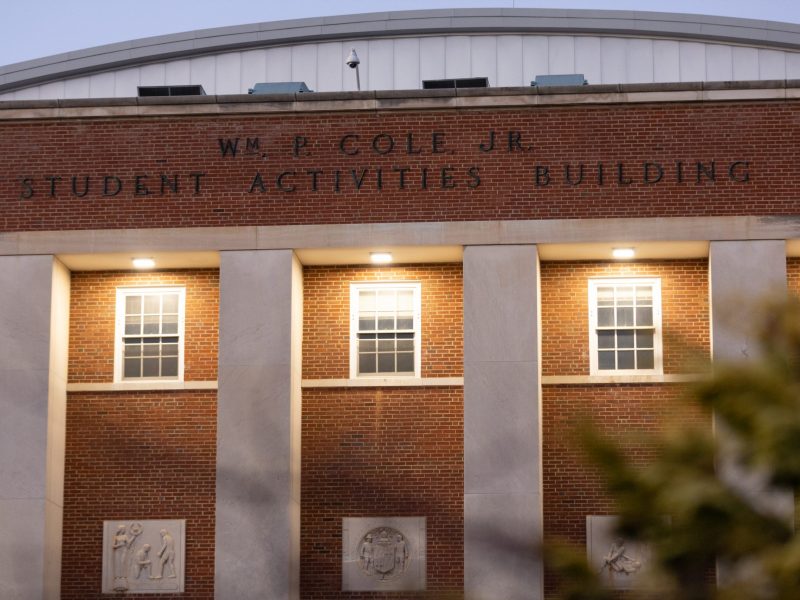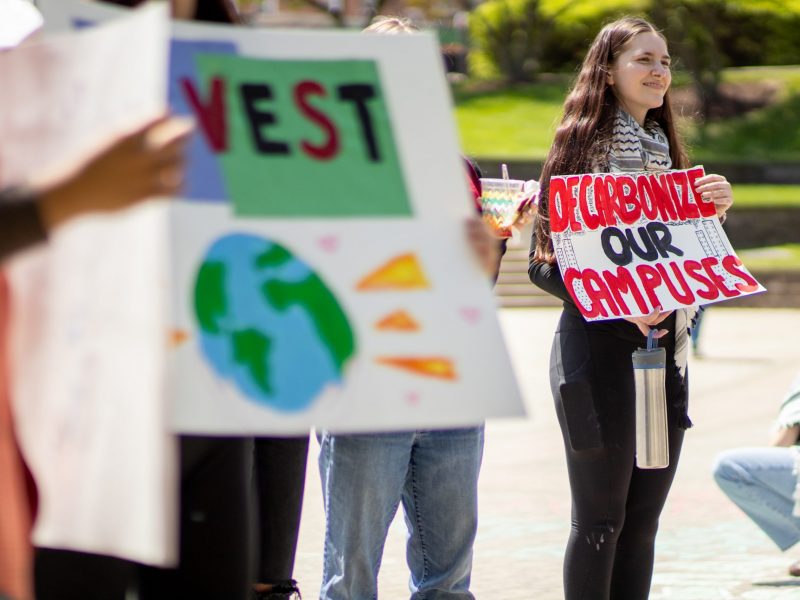The University of Maryland investigated a record-high 27 sexual misconduct claims during the 2016-17 academic year, and one student was expelled that year as a result, a break from two years of record-high expulsion numbers.
In all four cases from the 2016-17 academic year where students were found responsible for Sexual Assault I, II or both, they were given suspensions or disciplinary probations, according to the third annual Student Sexual Misconduct Report. The expelled student was found responsible for relationship violence.
Additionally, two students were found responsible for sexual harassment, exploitation and/or intimidation. One received disciplinary probation, and the other had their diploma withheld until May 2018.
Sexual Assault I includes all non-consensual penetration, and Sexual Assault II covers non-consensual sexual contact, according to university policy. Relationship violence, as written in the policy, includes sexual assault, physical abuse and other abusive behavior from a spouse or intimate partner.
[Read more: UMD found 7 students responsible for Sexual Assault I last year. Only 4 were expelled.]
Four students were expelled for sexual assault during the 2015-2016 academic year, during which 26 sexual misconduct cases were investigated. That represented an increase from the 2014-2015 academic year, when 18 sexual misconduct investigations led to three expulsions for sexual assault.
Andrea Goodwin, this university’s student conduct director, said the sanctions process is “not a science,” as there are no automatic punishments and many factors are taken into consideration.
“The aims of sanctions to students are threefold: to punish the students, to deter future offenses and to educate the students,” Goodwin said. “If somebody comes in and says, ‘I’m sorry, I accept responsibility, I want to learn from my mistakes,’ that might go towards a suspension. But we also get recommendations from both the complainant and the respondent, and there are some complainants who say, ‘I’d prefer a suspension with some educational sanctions.'”
Goodwin added that students found responsible will sometimes be suspended until the complainant in their case graduates, or be permitted to finish their degree elsewhere or online.
[Read more: U.S. Education Department opens third Title IX investigation into UMD]
Catherine Carroll, the director of this university’s Office of Civil Rights and Sexual Misconduct, said there have been several expulsions during the current academic year.
“It’s not that we’re actually doing fewer expulsions, it’s just that the time frame … plays out so that there was one expulsion in this reporting period,” she said. “Many of those pending cases that are listed in that final chart — there’s a number of those that resulted in expulsions.”
Twelve cases were listed as “pending” on the report, which covers July 1, 2016 through June 30, 2017. Goodwin said between four and six of those cases have since resulted in expulsions.
Cristina Johnson, the president of Preventing Sexual Assault, a campus group that advocates for sexual assault survivors, said she was surprised there was only one expulsion for sexual misconduct during the 2016-17 academic year, and that students found responsible for Sexual Assault I and II in the report were suspended instead.
“I saw [the single expulsion] and I literally reread like four times because I was in shock,” said Johnson, a senior journalism major. “To only be suspended or have a written punishment — that’s absurd.”
During the 2016-17 academic year, the office received 208 reports of potential sexual misconduct — the largest total since it was created in 2014. The office received a formal complaint in 80 of the cases, and completed an investigation in 27 cases, both of which were the most for a single academic year in the office’s history.
Nikki Wolfrey, PSA’s vice president, said these increases could actually be a positive sign, as they indicate more victims are reporting what they’ve experienced.
“It’s sad, but at the same time it’s also reassuring to know that these assaults are probably happening regardless,” she said. “More people feel comfortable coming forward — that’s always a good, reassuring sign.”
Fatima Taylor, the assistant director of this university’s CARE to Stop Violence Office, which works to combat sexual misconduct and acts as a resource for victims, said via email that her office has “seen a consistent number of clients from the past two academic years.”
For nearly half of the complaints raised during the 2016-17 academic year, the complainant didn’t want to move forward with the investigation. This was the case for less than one-third of complaints during each of the previous two academic years.
Not all complaints will result in full investigations. This may be because the victim chooses not to pursue an investigation, there is not enough information to investigate or the reported perpetrator is outside this university’s jurisdiction, according to the report.
The report stated that investigations took an average of about 90 business days to be resolved during the 2016-17 academic year. For the previous academic year, that average was about 120 business days. Federal guidelines put in place by the Obama administration required investigations be complete within 60 days, but Carroll called this time limit shortsighted.
“It’s not realistic in any meaningful way — that people can complete [an investigation] in that amount of time,” Carroll said. “Maybe a smaller institution that has a much bigger budget could, potentially, but for the most part, institutions can’t really meet that.”
Current education secretary Betsy DeVos has since rescinded the Obama-era recommendations. She issued an interim guidance permitting universities to raise the standard of proof in campus sexual misconduct cases from “a preponderance of the evidence,” which means it is more likely than not a student is responsible for sexual misconduct, to “clear and convincing evidence,” which means it is very likely but not certain a student is responsible.
Carroll attributed the shortened timeline to the hiring of four additional OCRSM employees — a deputy director, two sexual misconduct investigators and a standing review committee coordinator — and said the office is now fully staffed. There are no plans to hire new staffers for the office, she said, but she aims to improve the office’s organization with a new data management software, which would help manage case information and timelines more effectively.
Wolfrey said that ideally, the increase in reporting would come with an increase in OCRSM staffers.
“If we’re going to have an increase in reporting, which should be something that’s looked at more positively than negatively, there should be a concurrent response from the office to get more people in there and make sure that process isn’t delayed for anybody,” the senior government and politics major said.
In 2016, Carroll spoke out, saying her office was understaffed and underfunded. Later that year, the Student Government Association proposed a mandatory $34 student fee to aid the office. The proposal was withdrawn after this university announced two new positions in the CARE Office and four new positions in the OCRSM to address sexual misconduct. The positions in the CARE office were funded by an existing grant, and the university had approved funding for three of the four OCRSM positions earlier in the year.
This university currently faces three federal investigations regarding its handling of sexual misconduct cases, the most recent of which was announced last month.
A former student filed a $5 million lawsuit against this university in 2016 alleging he was wrongfully expelled for sexual assault.


